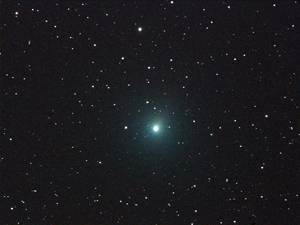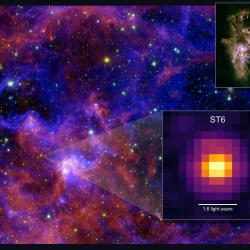Now is Your Chance to See a Comet!
Have you ever wanted to see a comet with your own eyes?
On December 16, 2018, comet 46P/Wirtanen will pass by Earth—but it’s already close enough to see! After its Earth approach, the comet will remain visible for several weeks. All you’ll need is a pair of binoculars, a very clear and dark night sky and some guidance on where to look.
 Weather permitting, the UMD Observatory—located on Metzerott Road in College Park—will hold impromptu observing sessions on clear nights from December 14 to December 19. For more information and to determine if an observing session will take place on a particular evening, please check the UMD Observatory website.
Weather permitting, the UMD Observatory—located on Metzerott Road in College Park—will hold impromptu observing sessions on clear nights from December 14 to December 19. For more information and to determine if an observing session will take place on a particular evening, please check the UMD Observatory website.
Where to look
The comet will move across the night sky from south to north during its approach. This means you will need to look in a slightly different place depending on the date. To figure out where to look, consult the finder charts assembled by the University of Maryland’s Department of Astronomy.
First, find the star chart for the day that you are observing. Next, locate the brightest stars in the finder chart and match the patterns to those in the sky. (For help finding stars or constellations, download a free planetarium app.) Then, use the plotted path to figure out where the comet should be relative to the reference stars.
Note that the charted comet locations are for midnight Coordinated Universal Time, so you may need to adjust where you are looking, depending on the time of day—keeping in mind that the comet is traveling north.
For example, 9 p.m. EST on December 16 converts to 2 a.m. on December 17 in UTC. Following the instructions above, open the “Dec 16 - Dec 25” finder chart and look at the December 16 and December 17 comet locations. On those days, the comet will be near the Pleiades star cluster. Use the constellation Taurus to locate the Pleiades; from there, you can locate the comet.







